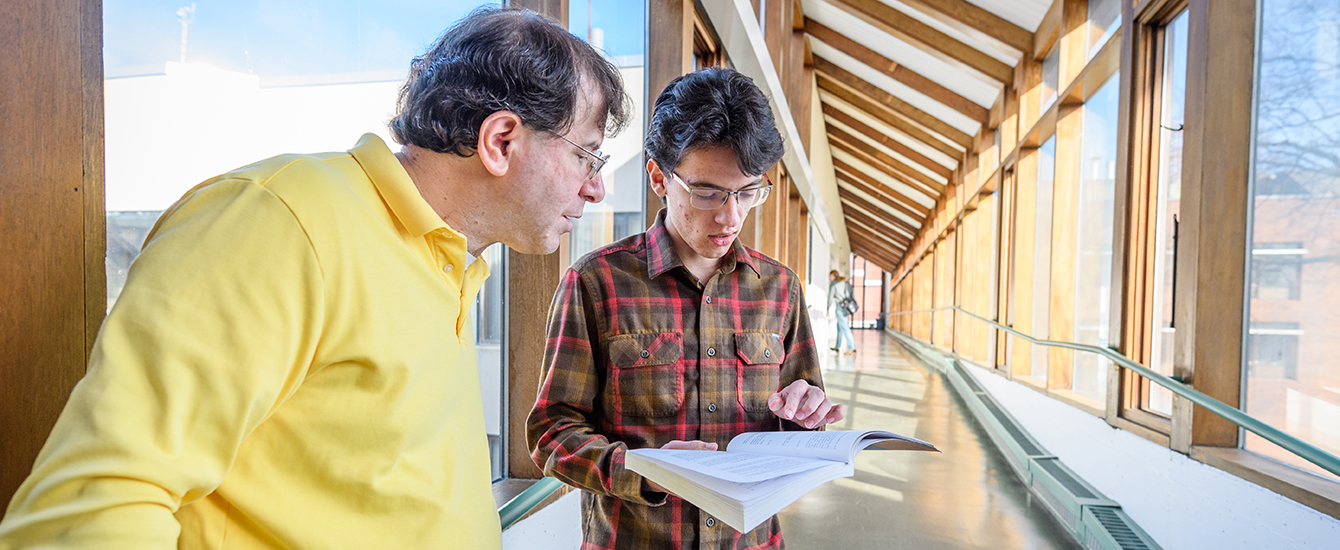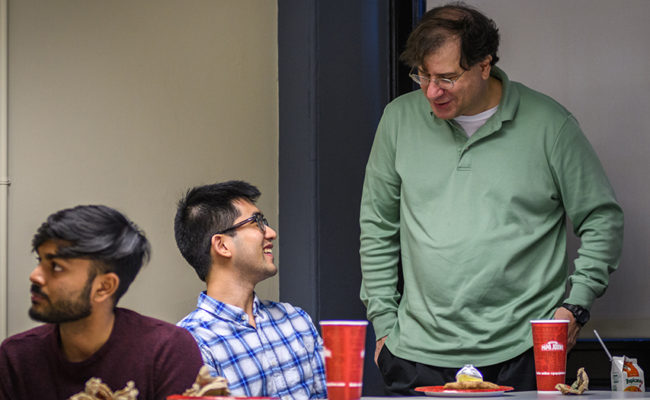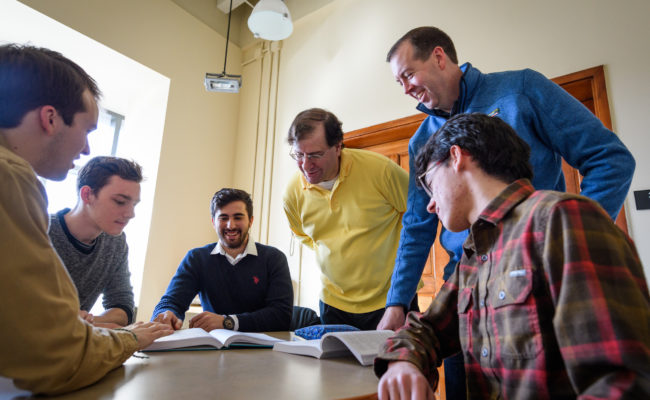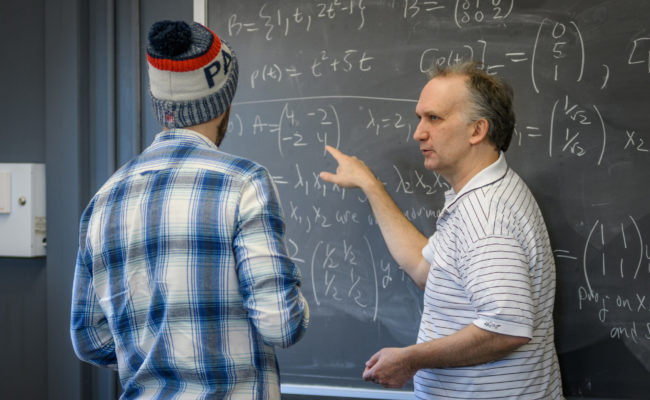Independent Research with a Faculty Mentor in Mathematics
Interested in pursuing an individual research project in mathematics? We encourage you to pursue independent research under the supervision of a faculty mentor. Student research activities include:
- Honors theses
- Inter- or intradisciplinary collaborative research on cutting-edge problems from a specific field of computer science
- Reading courses on advanced topics
- Qualified self-designed projects
Below, check out some of mathematics students’ most recent independent research projects.
Mathematics Student Projects
Diving into Research
In addition to independent research projects, our department periodically provides opportunities for first-year and upper-class students to work in groups with faculty members on research projects through the course Diving into Research (MATH110, MATH 111). MATH110 Diving into Research is a year-long opportunity for first-year students to work in groups with faculty members on research projects.
Recent topics have included:
- Modeling re-entry communication blackout on the space shuttle caused by plasma
- Modeling gene regulation in a developing fruit fly embryo
Groups are limited to eight students. Students earn 0.5 credits each semester, and the full year is necessary to obtain credit. May be repeated as MATH111. Note: Neither MATH 110 nor MATH 111 count as credit towards the Math major.





